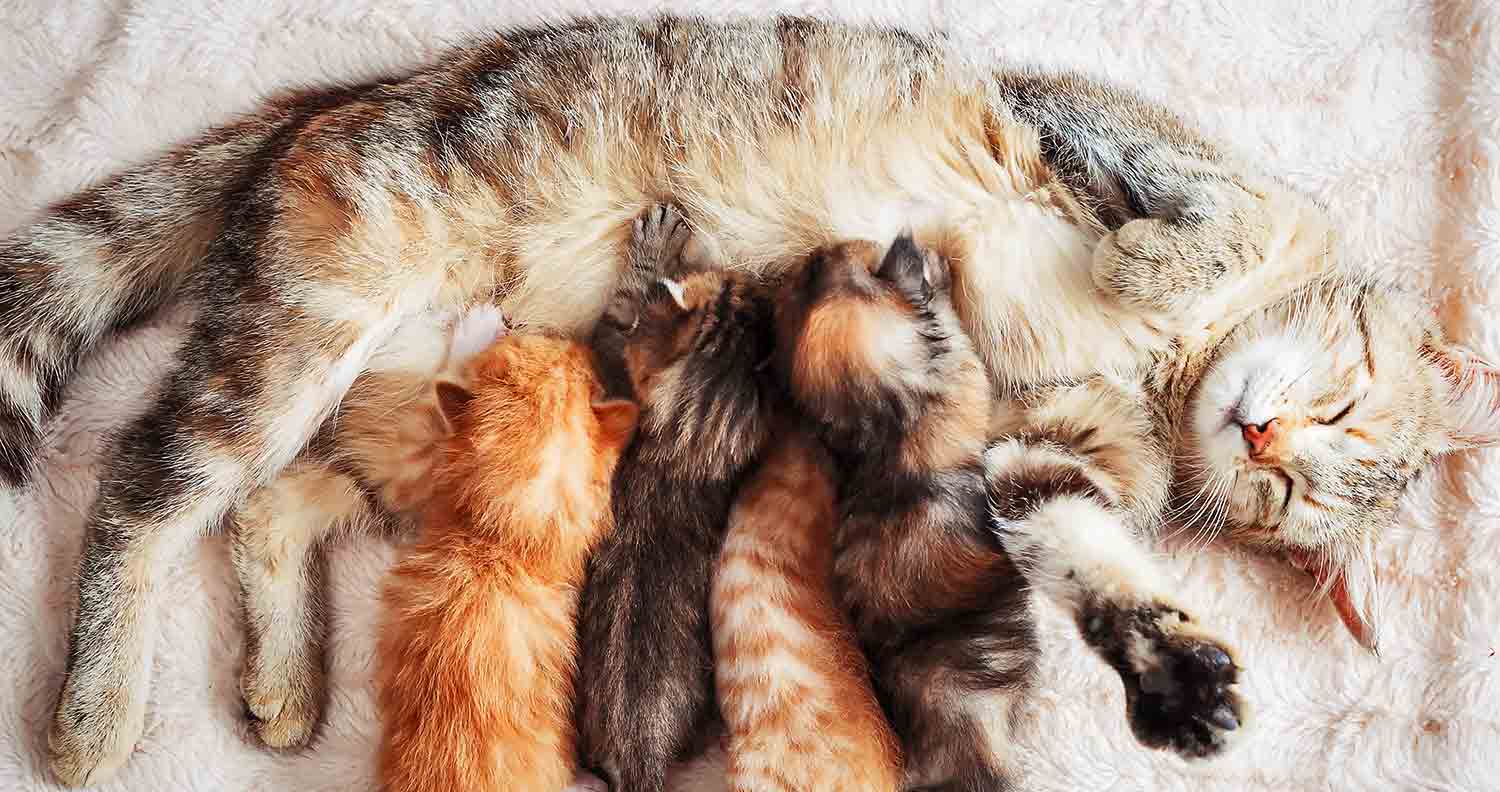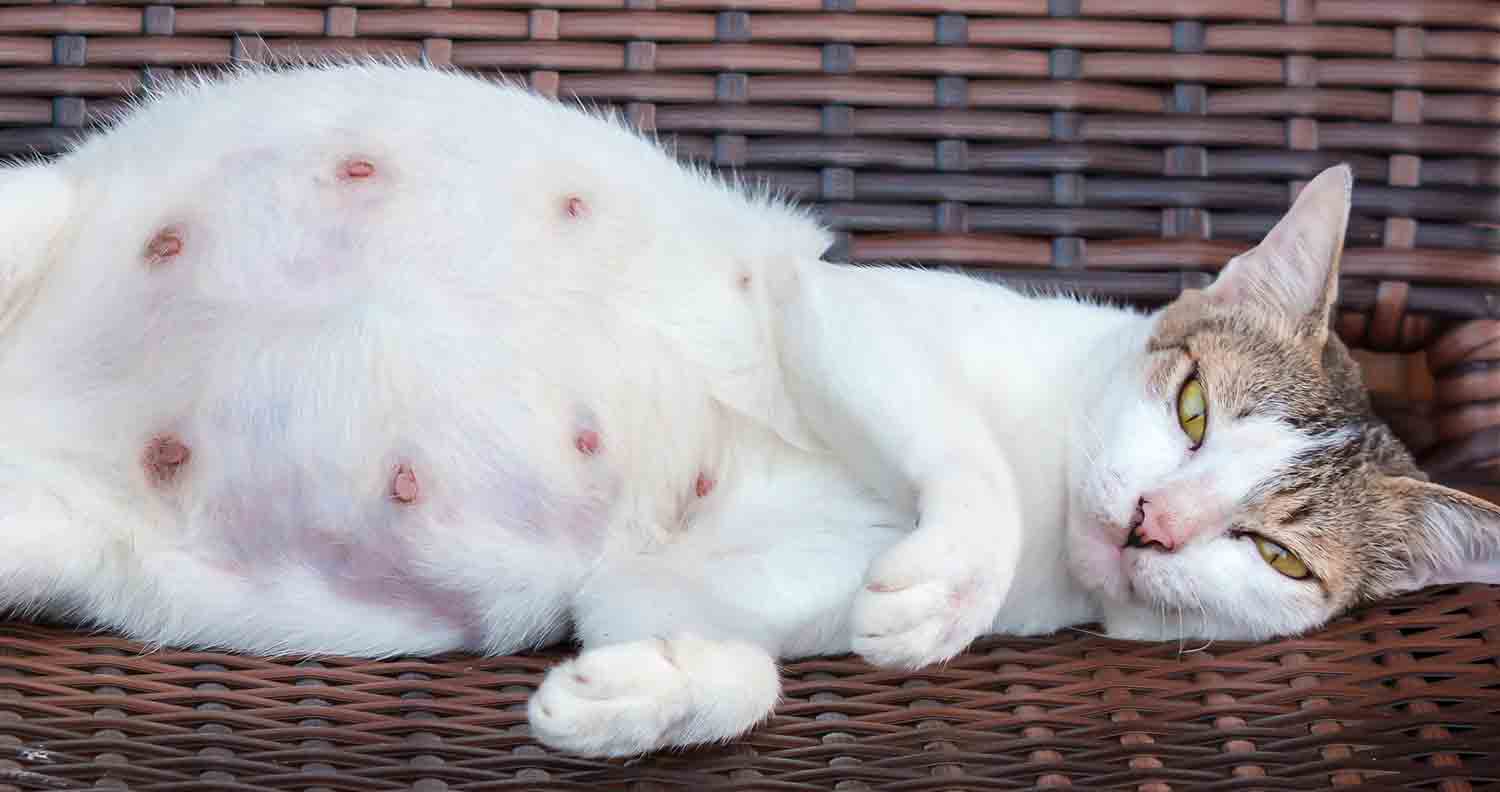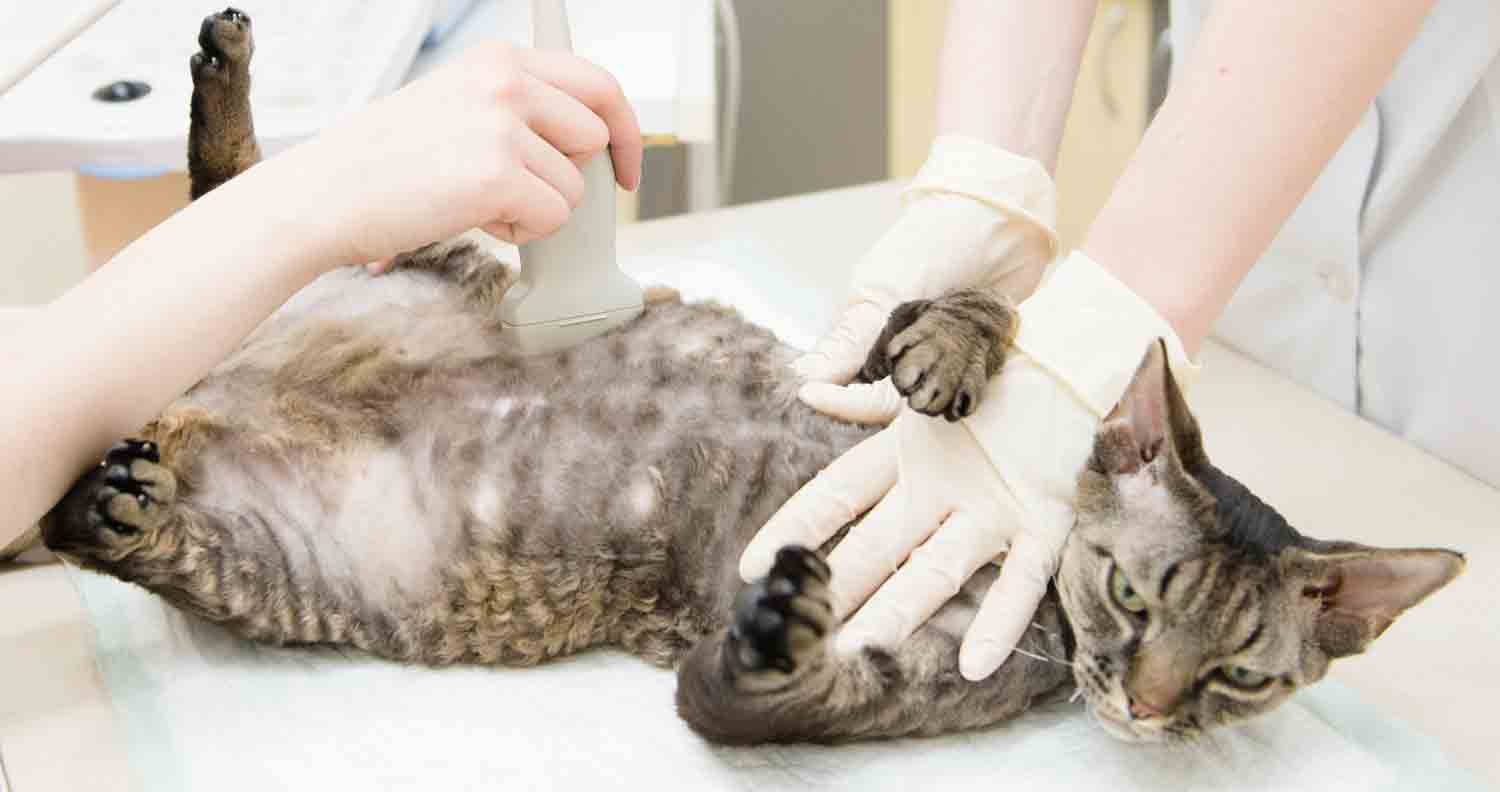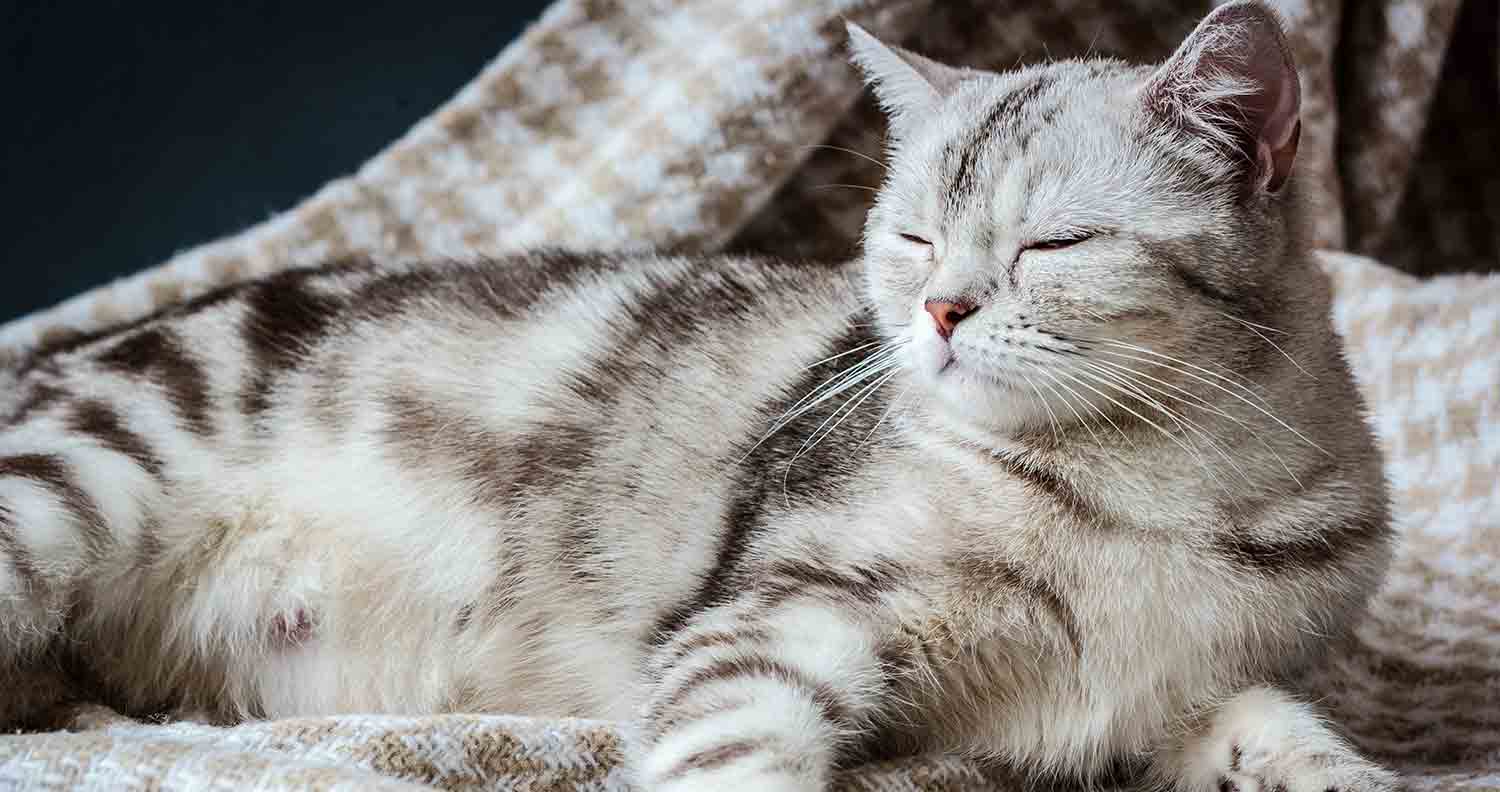How to Tell if a Cat is Pregnant
Share:

Your kitty is a little out of sorts and has a slightly swollen bell and you're wondering how to tell if a cat is pregnant? Well, there are some major signs and in this article, we’ve discussed every factor in detail so you can understand the most common symptoms and signs indicating a cat pregnancy.
If your cat had exposure to other male cats then there might be some chances of your cat getting pregnant. You can easily tell that your little queen got pregnant by some noticeable mood and physical changes. But these changes might only occur after 2 or 3 weeks of her hooking up with that Tom! So, you might not be able to notice right away that your cat is pregnant.
How to Tell if a Cat is Pregnant: 7 Major Signs
Physical and Mood Changes in a Pregnant Cat
Various signs can tell you that your cat is indeed pregnant. You have to notice these signs and take your cat to the vet as soon as possible once you have an inkling that you might have a cat pregnancy on your hands and little kittens on the way!
Look for these signs in your cat's body because these are the main signs that indicate pregnancy in cats:
How to tell if a cat is pregnant: Sign 1
Heat cycles cease
Heat cycles are natural in any animal. If your queen’s heat cycles stop. then it is a clear sign that a cat is pregnant. Usually, a cat’s heat cycles begin at the age of six months, but this can vary from case to case.
Moreover, your queen might experience multiple heat cycles during the breeding season. While the breeding season varies according to the environmental factors. So, if your cat has reached puberty and has not been spayed and is not on heat somehow, then there might be a possibility that your cat is pregnant.
How to tell if a cat is pregnant: Sign 2
Enlarged abdomen
It is natural for the abdomen to become large when a cat is pregnant. But abdomen enlargement might only appear by mid to late pregnancy. So, you have to check other signs along with the abdomen enlargement to make sure that your queen is pregnant.
Abdomen enlargement might also occur because of certain infectious diseases, tumors, inflammation, neoplasia, or any other such conditions. If your cat is spayed then it might have any such disease, but if your cat is un-spayed and has been sneaking around lately then there are chances that your queen is pregnant.
How to tell if a cat is pregnant: Sign 3
Appetite Increase
If your cat is eating or craving for more food lately, then this might be a sign that a cat is pregnant. Appetite increase is a major sign that your cat is pregnant. After all, if she is, then she's buring up that energy feeding the growing kittens inside her - so it makes sense for her to eat more, right?
There are other reasons associated with an increased appetite as well. These reasons include lower quality food, an increase in activity, or certain medications. So, you have to be cautious of these factors as well before assuming that your little fur buddy is pregnant.
How to tell if a cat is pregnant: Sign 4
Nipples Swelling
The swelling of nipples is another strong sign showing that your cat is pregnant. Your queen’s nipples will pink up and become swollen up from the third week of pregnancy. If you notice that the nipples of your cat have swollen up in the past few days then there might be a possibility that your queen is pregnant.
But nipples swelling is also associated with other factors as well i.e. Mastitis, Mammary Cancer, Galactostasis, etc. But these problems occur with certain other effects as well. So, you have to notice other physical and mood changes in your cat as well to be sure that your cat is pregnant.

How to tell if a cat is pregnant: Sign 5
Weight Gain
In the majority of the cases, a cat gains weight during pregnancy. So, if your cat is not spayed and enjoys a momentary rendezvous outside the house then there might be a sign that your cat is pregnant!
But here, we have to make it clear that weight gain isn’t only associated with pregnancy. Weight gain might also be caused by certain tumors, lack of exercise, increased food intake, and many other factors. Therefore, you should also check other signs as well before assuming that your queen is pregnant.
How to tell if a cat is pregnant: Sign 6
Vomiting
Another sign of cat pregnancy is vomiting. Pregnant cats also experience occasional morning sickness just as humans do. Vomiting usually occurs at the end of the first month of pregnancy in cats. So, if you find your queen experiencing morning sickness then there is a possibility that your cat is pregnant.
Vomiting might be caused by other factors as well i.e. appetite change, diarrhea, hairballs, heartworm disease, etc. This is the reason that you must not expect that your queen is pregnant just because of the vomiting. Other signs are also to be considered before you celebrate the good news. We all know how much cats can throw up for semingly no reason, don't we?!
How to tell if a cat is pregnant: Sign 7
Mood Changes
Cats experience noticeable mood changes if they are pregnant. The two prominent mood changes in pregnant cats are as follows:
a. Increased Affection
If your cat is usually not the type of cat that shows affection towards their 'hooman' - that's you - then if they start behaving more affectioantely that's a sign of cat pregnancy. If your cat is normally very loving you should still notice an increased amount, since a pregnant cat always shows increased affection.
b. Increase in Sleeping
Cats usually sleep more if they are pregnant. So, if your queen is sleeping more than usual and you are observing other signs as well, then there might be a chance that your fur queen is pregnant.
We know, how is it possible for your cat to sleep more!?
But, if you notice it and her usual 22 or 23 hours a day has gone up to, basically, all the time, then you might have good cause to think she's pregnant.
Take Your Cat to the Vet if You Think Your Cat is Pregnant
If you have noticed the signs mentioned above in your cat then you must take your fur queen to a vet for proper examination. You must not assume that everything is fine, as these signs might occur because of any other disease that can be fatal for your cat.
It's a good idea to let the vet examine your cat and make sure she is in good condition. Just as humans, your cat needs periodic examinations at a clinic to make sure that everything is fine.
A vet usually examines the following:
1. Palpation of Abdomen
Palpation of the abdomen usually gives a rough idea to the veterinarians that whether or not your cat is pregnant. A vet will be able to inform you right away if your fur queen is pregnant or not. A good vet can also tell you how advanced your queen’s pregnancy is just by palpating the abdomen.
Veterinarians try to feel uterine swellings accompanied by pregnancy through abdominal palpation. Abdominal palpation is also performed to find the size of kittens present in the abdomen of the cat (but the size of a kitten can only be palpated in the later stages of pregnancy).
There are various advantages of palpation of the abdomen, some are mentioned below:
Certain disadvantages are also associated with palpation of the abdomen, these are mentioned below:

2. Ultrasound of Abdomen
Abdominal ultrasound is considered to be the most accurate procedure for diagnosing a cat pregnancy. An ultrasound-wave is placed on the abdomen of the cat, and this uses the reflection of ultrasound waves to detect the kittens, placental membranes and uterine fluids present inside the abdomen.
The kittens are positioned along with the uterine horns of the cat after 13 to 14 days of conception and they are detected by ultrasound as spherical swellings after 11 to 15 days of gestation. But diagnosing pregnancy at such an early time requires an excellent ultrasound machine used by a well-experienced ultrasonographer.
Accurate pregnancy diagnosis is usually possible only around 3 weeks or more after your queen gets pregnant. The heartbeat of the fetus can only be detected after 22 days of gestation.
There are various advantages of abdominal ultrasound, some are mentioned below:
Certain disadvantages are also associated with the ultrasound of the abdomen, these are mentioned below:
3. Abdominal Radiography (X-rays)
The vet might suggest performing abdominal radiography to diagnose pregnancy. But this procedure is only accurate after 40 to 45 days of pregnancy. This is because the bones of fetal kittens (that's kittens in the womb) only get calcified after around 40 days of pregnancy.
Radiography reveals the skeletons of the kittens and this is the reason that it is only suggested once the bones of fetal kittens are calcified. Abdominal radiographs are also used to estimate the fetal crown-rump length of the kittens. This makes it easier for the vets to have a clue of the age of the kittens in the uterus.
Abdominal radiography is considered to be the most accurate indicator of litter size. The vet can easily determine the number of kittens present inside your queen’s belly with radiography.
There are various advantages of abdominal radiography, some are mentioned below:
Certain disadvantages are also associated with abdominal radiography, these are mentioned below:

How Long are Cats Pregnant?
If your fur queen is pregnant then you must notice certain signs that might give you an idea that your cat is about to give birth to her precious kittens. A cat’s pregnancy lasts for about 64 to 67 days. So, if your queen is pregnant for at least 64 days then you must notice the visible signs that might give you an idea that your queen is about to give birth soon.
1. Nesting
If your cat starts looking out for a warm and comfortable place, then this might be the sign that your queen is about to give birth to her kittens. Nesting is considered to be the pre-labor state of your cat’s pregnancy. Your fur queen might start nesting one week before the delivery.
Your cat will lookout for a safe place to deliver the babies, so it is recommended for you to provide her with a nesting box. The nesting box would serve to be the quiet and safe place where your queen can comfortably give birth to the little kittens. If your cat starts moving in and out of the nesting box, then it means that she is uncomfortable and about to give birth.
2. Lowered Body Temperature
The body temperature of your fur queen will drop a day or two before giving birth. The normal temperature of a cat lies in between 37.7 to 39.1C (100 to 102.5F), but a day or two before going into labor, the body temperature of the cat drops to around 37.2C (99F).
A regular check of your cat’s body temperature is recommended when your queen is pregnant. This gives you the time to prepare for the labor.

Get 30% off and FREE shipping on cat food!
U.S.A. only
To Find out why we recommend chewy.com, click here
You can check the temperature of your cat under the armpits. But even if you are not able to check the temperature of your pregnant cat now and then, the other signs would let you know.
3. Restlessness
It is quite common for cats to feel restless near the time of delivery. It is normal for your fur queen to feel fatigued or nervous. You might experience your cat wandering around the house looking for a place to give birth. If you have provided your fur queen with a nesting box, even then it is normal for her to still try to find a place.
The breathing might become harder and the mewing may become louder and piercing. This all happens because of the premature contraction that cats experience near the labor.
4. Vulva Licking
Vulva licking usually occurs in the labor stage. Your fur queen might lick her vulva and abdomen to stimulate the birth. So, if your queen starts licking her vulva at the end of her pregnancy period, then this might be a piece of good news that your little kitty is in labor and is about to give birth to her precious babies.
5. Vocalization
You don’t have to worry if your calm and quiet fur queen is noticeably louder near labor time. It is usual for the cats to meow louder and at a high pitch when they are near to the labor. Your cat might howl, cry, and meow continuously before labor. If such a thing happens then you must know that your fur queen is about to give birth.
Your cat might seem overheated and thirsty as well due to all the howling, crying, and meowing. But you must rush her to a vet if you feel like your fur queen is having trouble going into labor. Surgical and medical help is a must in some cases.
6. Loss of Appetite
Your fur queen might not want to eat anything before going into labor. It is quite normal for cats to lose their appetite right before giving birth to their kittens. But make sure to keep your fur queen hydrated before labor.
How to Tell if a Cat is Pregnant: Some Final Thoughts
If your cat is un-spayed and had interaction with a male cat then you must check for the signs to find out if your cat is pregnant or not. Certain mood and physical changes occur during pregnancy. You must not freak-out if your fur queen is acting strange. If you have noticed all or even some of the signs of pregnancy, then you must take your kitty to the vet.
Abdomen palpation, ultrasound, and radiography will confirm the pregnancy of your fur queen. Make sure to take extra care of your little cat in pregnancy. Check for the signs showing that your cat is about to give birth to the kittens. A cat’s pregnancy lasts for 64 to 67 days, so check for the signs when the labor is near.
Watch this video to learn about some of the major signs indicating your cat’s pregnancy:

Get 30% off and FREE shipping on cat supplies!
U.S.A only
To Find out why we recommend chewy.com, click here
Affiliate disclosure : We Love Cats and Kittens is a participant in several affiliate programs including the Amazon Services LLC Associates Program, and the Chewy affiliate program. These are affiliate advertising programs designed to provide a means for sites to earn advertising fees by advertising and linking to products on their sites. If you click on links in our blog posts and articles we may be paid a commission.
Share:

